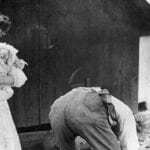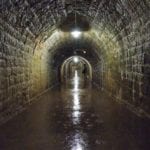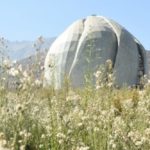 Mysteries
Mysteries  Mysteries
Mysteries  History
History 10 Surprising Stories About the Texas Rangers
 Humans
Humans 10 Philosophers Who Were Driven Mad by Their Own Theories
 Miscellaneous
Miscellaneous 10 Video-Game-Worthy Weapons and Armors from History
 Weird Stuff
Weird Stuff 10 Psychics Who Accurately Predicted Wartime Events
 The Arts
The Arts 10 Pieces of Art Inspired by a Broken Heart
 Health
Health 10 Science Fiction-Sounding New Medical Treatments
 History
History 10 Surprising Facts About the Father of Submarine Warfare
 Space
Space Ten Astonishing New Insights into Alien Worlds
 Weird Stuff
Weird Stuff 10 Bizarre Summer Solstice Rituals Still Practiced Today
 Mysteries
Mysteries Top 10 Haunting Facts About the Ghost Ship MV Alta
 History
History 10 Surprising Stories About the Texas Rangers
 Humans
Humans 10 Philosophers Who Were Driven Mad by Their Own Theories
Who's Behind Listverse?

Jamie Frater
Head Editor
Jamie founded Listverse due to an insatiable desire to share fascinating, obscure, and bizarre facts. He has been a guest speaker on numerous national radio and television stations and is a five time published author.
More About Us Miscellaneous
Miscellaneous 10 Video-Game-Worthy Weapons and Armors from History
 Weird Stuff
Weird Stuff 10 Psychics Who Accurately Predicted Wartime Events
 The Arts
The Arts 10 Pieces of Art Inspired by a Broken Heart
 Health
Health 10 Science Fiction-Sounding New Medical Treatments
 History
History 10 Surprising Facts About the Father of Submarine Warfare
 Space
Space Ten Astonishing New Insights into Alien Worlds
 Weird Stuff
Weird Stuff 10 Bizarre Summer Solstice Rituals Still Practiced Today
10 Amazing Ancient Buildings Still In Use Today
“They don’t build them like they used to.” Whenever people see a particularly distressing piece of modern architecture they are likely to sigh that sentence. It is true that without constant upkeep the glass and steel structures that dominate modern cities would soon slide into broken ruins. Ancient builders who did not have access to modern materials had to make do with stone, timber, and concrete. These are substances that will survive us all.
Many buildings from the ancient world are still visible today but a few have managed to transcend their own time and continue to be used today. Here are ten living examples of ancient architecture.
Top 10 Amazingly Preserved Ancient Foods
10 Proserpina Dam
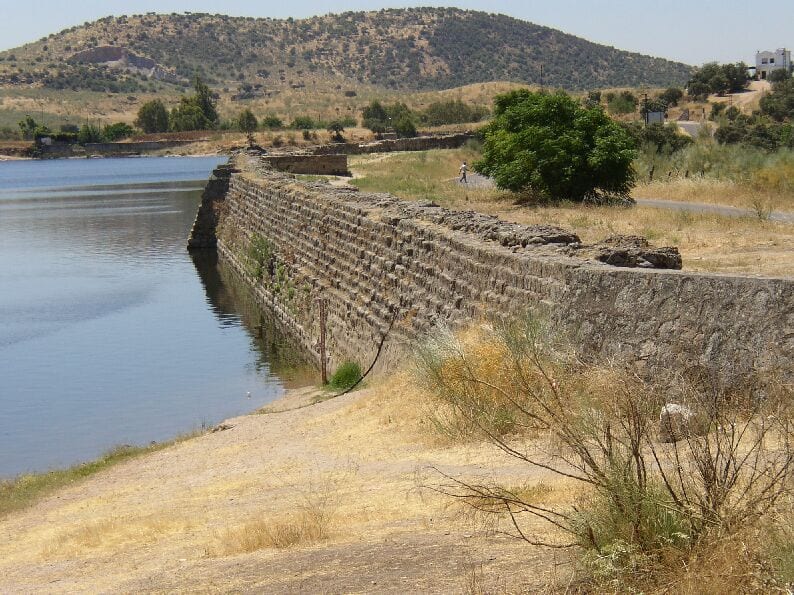
Threats to dams are all too common in news stories these days and not just through terrorism. Many dams built in the middle of the 20th century are already showing serious signs of breakdown. Failing dams can threaten thousands of people with a watery death or the destruction of all their possessions. Yet there is a dam that has stood for nearly 2000 years and is still in use today.
Proserpina Dam in Spain was built in the second century AD by Roman engineers to supply the city of Augusta Emerita, modern day Merida, with water. Standing 12 metres high and over 400 metres long the dam was constructed from soil covered in bricks and supported by several buttresses. The water held back by the dam fed into the Milagros aqueduct, some of whose towering arches still stand.
While the Proserpina dam no longer provides drinking water for a city it remains in use to this day. Farmers in the local area use the water it supplies to irrigate their crops by opening and closing the inlets on the dam just as the original builders would have been able to.[1]
9 Arles Amphitheatre
The Romans liked to build impressive structures not only for the benefits they brought to themselves but also to show natives all of the benefits that came with being under the control of Rome. Wherever they went aqueducts, temples, and theatres were sure to spring up in shining stone. The amphitheatre in Arles must have been one of the greatest sights a Gaul was ever likely to see.
Erected in 90 AD the Amphitheatre could hold 20,000 people. 120 arches surround an oval arena. The banks of seats allowed the action to be viewed from all sides, as the name amphitheatre (“view from both sides”) suggests. For over 400 years the amphitheatre in Arles was home to games that ranged from animal fights, to theatrical shows, to gladiator combats. With the fall of Rome in the West however the amphitheatre fell out of use, at least for its original purpose.
The walls of the amphitheatre became the walls of a fortress. 200 houses, churches, and a town square grew up in the middle of it. Only in 1826 did the houses begin to be taken down and the amphitheatre was restored to its original state. Today plays and concerts are performed there but those who wish to see the sand stained red with blood once again can also see bull fights.[2]
8 Theatre of Marcellus
While Arles’ amphitheatre has been fully restored there is a theatre in Rome that has been repurposed entirely. The Theatre of Marcellus built in 13 BC was the largest theatre in Rome at the time of its completion and able to hold almost 20,000 spectators. Named for the nephew of the Emperor Augustus it would remain one of the grandest sites in Rome until the Colosseum was erected. Now though it is one of the most outstanding set of private residences in the Eternal City.
The Theatre of Marcellus fell into disrepair in the fourth century AD and some of the building was dismantled to reuse the building materials elsewhere. The bridge of Cestius across the Tiber was partly constructed with stone from the theatre. Much of the structure was saved however and over the centuries became first a fortress and then a private home for the incredibly wealthy Orsini family.
Over time the palatial home of the Orsinis was divided up into apartments and these still remain today. It may not be how the builders originally intended the structure to be used but its arches stand just as proudly today as they did when Augustus first opened the theatre to the public.[3]
7 Theatre of Epidaurus
While the Romans loved a show they at first went to see them in wooden structures that had an unfortunate habit of falling down. When a wooden amphitheatre collapsed at Fidenae in 27 AD around 20000 people are said to have died in the disaster. The Greeks however could have shown them a safer method of building that they had perfected centuries before – they built their theatres on naturally occurring slopes.
The theatre of Epidaurus was constructed in the 4th century BC based on a design by the architect Polykleitos the Younger. Built on the site of a sanctuary dedicated to the healing deity Asclepius the theatre hosted singing and theatrical performances for centuries. This is not as unusual as it may at first sound as for the Greeks viewing plays was thought to play a role in curing some sicknesses. At the very least you were distracted from your malady.
The theatre lay buried until 1881 but was soon excavated and restored. Today it is a popular venue for music and theatre. The acoustics of the theatre are so good that even those sitting in the back row can hear a person standing on the stage without any need for a microphone.[4]
6 Diocletian’s Palace
Diocletian was the only Roman emperor to ever voluntarily retire and enjoy a lengthy post-imperial life. He knew that he had to remove himself from any of the empire’s centres of power or he would constantly be drawn back into the politics so he built himself a palace in what is now Split in Croatia. In 305 AD he settled into his new home and spent his time growing cabbages.
Diocletian’s palace was more than just a jolly retirement villa for an old man. Surrounded by stout walls it held the ex-emperor’s living quarters but also barracks for a sizeable armed force to protect him. These walls were the key to the palace’s survival.
When Slavic people invaded the area in the 7th century many local people retreated behind the walls of the palace for protection. Soon the palace formed the nucleus of first a town and then a city. The old town of Split is built almost entirely within the walls of Diocletian’s former home. While there are many new buildings inside the walls much of the original palace survives and is in use as homes, shops, and churches.[5]
8 Incredible Resurrected Ancient Sounds
5 Maymand Caves
Troglodytes have a bad reputation but sometimes living in a cave is the smart thing to do. In hard conditions the shelter of a cave can be the ideal home. Thick walls insulate you from harsh winters and scorching summers. The narrow entrances are easily sealed for protection. Now wonder that many in the past chose caves to live in, nor that some people still call them home.
In Maymand in Iran there are signs of human habitation from over 10,000 years ago. Ancient engravings and pottery sherds litter the area. Yet it is the caves of Maymand that are most interesting and evidence shows that they have been in continual habitation for 3,000 years. Today 300 caves exist in the village which are stacked one atop another in steps up the side of a slope. Each cave consists of a single room with space for a central stove that can be used for heating and cooking.
The caves are not natural features but were scratched out of the rock under Maymand. Local legend has it that the caves were carved out with flakes of hard stone found in the area rather than with more traditional tools.[6]
4 Mundeshwari Temple
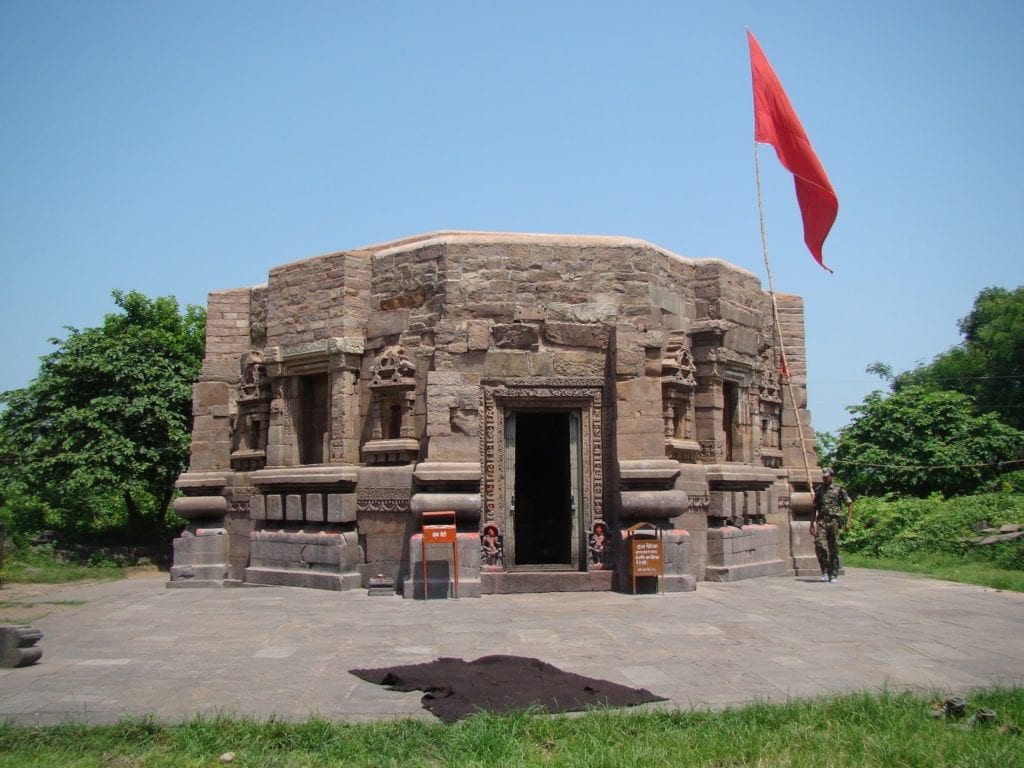
If a building remains important to a community then the chances are that it will survive anything. The Mundeshwari Temple at Kaura in India is considered to be the oldest functional Hindu temple in the country. The small, stone shrine is octagonal in shape and is thought to date from around 600 AD. While the name of the temple suggests a link to the asura Munda the main focus of worship is the four-faced aspect of the God Shiva.
The temple is covered in engravings and decoration but was once larger. The area around the building is strewn with fragments of lost parts of the temple. Currently these remains of the larger building are being studied and the original structure may one day be revealed.
As it is the temple remains a place of worship for many Hindus. The smoke from torches and burning incense has stained the interior walls almost black. Restoration work has been done to remove this marks of devotion but they seem to have done the building little harm over the last few hundred years.[7]
3 Castel Sant’Angelo
Sometimes what an ancient building ends up being used as can not possibly have been foreseen by its builders. Castel Sant’Angelo in Rome has gone through so many transformations that it is hard to imagine that it started its existence as a mausoleum for a Roman emperor.
Emperor Hadrian was a bit of a builder. As well as the famous wall across northern England that is named for him he rebuild the spectacular Pantheon in Rome, another building that still welcomes visitors today. But when he build a tomb for his ashes to be stored in he had no idea it would at various times be a fortress for Popes, a prison, and a museum. Left unfinished on Hadrian’s death the huge cylindrical structure beside the Tiber was completed by his successor and served as the resting place for many in the imperial family.
The tomb was incorporated into the walls of Rome when they were expanded by the emperor Aurelian. This began its transformation into a military site. When the Popes used it as a stronghold to retreat to in times of danger they stored their valuables in the chamber at the centre of the structure – probably the very spot where Hadrian himself was interred. Now Castel Sant’Angelo is a museum containing many Roman and Christian masterpieces, aptly mingled together in this strangely blended building.[8]
2 Horyu-ji
It is easy to see how some structures have survived for so long. A cave can hardly burn down and a dam takes quite some effort to dismantle. But when a building is made largely of wood it becomes more amazing that they survive at all, let alone intact. The pagoda at Horyu-ji in Japan is widely considered to be the oldest surviving, functional wooden building in the world.
At the core of the pagoda is a central wooden pillar 35 metres tall. By examining the growth rings of the wood it has been worked out that the tree it was taken from was felled in 594 AD. Even though a fire swept through the temple in the 670 AD many of the surviving buildings date from the rebuilding that took place in the 7th century.
As Japan has been riven by war and subject to powerful earthquakes over the centuries the survival of these delicate buildings is almost miraculous. Still a site of worship today they give an insight into the first appearance of Chinese Buddhist architecture in Japan and remain much as they were when first built.[9]
1 Tower of Hercules Lighthouse
On a rocky outcrop on the northern coast of Spain a lighthouse pulses out a warning to ships to keep them safely on course. If you had visited the same spot in the 2nd century AD you would have found the same structure doing the same thing. The Tower of Hercules, as it is now known, is the oldest functioning lighthouse in the world.
Originally called the “Farum Brigantium” the lighthouse was supposedly modelled on the Pharos of Alexandria, the great lighthouse of the city and one of the wonders of the ancient world. At the base an inscription can be read in Latin that describes the lighthouse as the work of an architect called Gaius Sevius Lupus and the tower being dedicated to the god Mars. The current Tower of Hercules stands 55 metres tall. The original Roman tower was 34 metres in height before two additional levels were added in the 18th century.
Legend has it that the tower was built on the spot where Hercules slew the giant Geryon. Today the coat of arms for the nearby city of Corunna show the lighthouse built atop the giant’s skull and bones. Archaeologists have found many interesting artefacts in the region, though they have not yet located a giant skull.[10]
10 Stories From The Ancient World That Need A Movie


